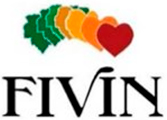
Estudios científicos
Potential mechanism by which resveratrol, a red wine constituent, protects neurons.
Abstract:
Polyphenolic compounds, such as resveratrol, are naturally present at high concentration in grape skin, seeds, and red wine. Resveratrol is present in cis and trans isoforms and the major trans isomer is the biologically active one. Epidemiologic studies have revealed a reduced incidence of cardiovascular risk associated with consumers of red wine; this has been popularized as the French paradox. Resveratrol has been shown to have significant antioxidant properties in a variety of in vitro and in vivo models. It can reduce ischemic damage in heart ischemia reperfusion injury and also in brain ischemia/reperfusion in rodent models. Due to the high rate of oxygen consumption in the brain, and especially low levels of antioxidant defense enzymes, this organ is particularly susceptible of free radical damage. Most of the protective biological actions associated with resveratrol have been associated with its intrinsic radical scavenger properties. We have investigated the possibility of other indirect pathways by which resveratrol can exert its neuroprotective abilities. We have specifically tested whether heme oxygenase neuroprotective enzyme could be stimulated after resveratrol treatment. Using primary neuronal cultures, resveratrol was able to significantly induce heme oxygenase 1, whereas vehicle control showed no effect. No detectable toxicity was quantified. It is well established that after stroke significant levels of intracellular heme levels increase. The source of free heme comes mainly from several heme-containing enzymes. Heme (iron-protoporphyrin IX) is a pro-oxidant and its rapid degradation by heme oxygenase is believed to be protective. Moreover, the generation of heme metabolites can also have their own intrinsic cellular properties. All together, increased heme oxygenase activity by resveratrol is a unique pathway by which this compound can exert its neuroprotective actions.
Comentarios divulgativos:
Los compuestos polifenólicos, como el resveratrol, están naturalmente presentes en una concentración elevada en la piel de uva, semillas y el vino tinto. El resveratrol está presente en las isoformas cis y trans siendo el isómero trans el biológicamente activo. Los estudios epidemiológicos han revelado una reducción en la incidencia del riesgo cardiovascular asociado con los consumidores de vino tinto, lo que se ha denominado como la paradoja francesa. El resveratrol ha demostrado tener importantes propiedades antioxidantes en modelos in vitro y en modelos in vivo. Se puede reducir el daño isquémico causado por la reperfusión y también en la isquemia cerebral / reperfusión en modelos de roedores. Debido a la alta tasa de consumo de oxígeno en el cerebro, y sobre todo los bajos niveles de las enzimas de defensa antioxidante, este órgano es particularmente susceptible deldaño de los radicales libres. La mayoría de las acciones de protección biológica asociada con el veratrol se han asociado a sus propiedades intrínsecas captadorasde radicales. Hemos investigado la posibilidad de otras vías indirectas por el que el resveratrol puede ejercer su capacidad neuroprotectora. Hemos probado específicamente si la enzima hemo oxigenasa puede ser estimulada después del tratamiento con resveratrol. Utilizando cultivos primarios de neuronas, el resveratrol era capaz de inducir la o oxigenasa 1 significativamente.. En conjunto, el aumento de la actividad de hemo oxigenasa por el resveratrol es un camino único por el cual este compuesto puede ejercer su acción neuroprotectora.







